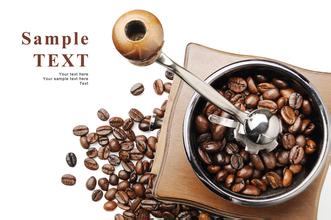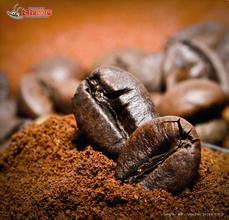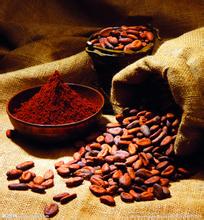How to roast espresso beans-Starbucks concentrated roasted coffee beans
How to roast espresso beans-Starbucks concentrated roasted coffee beans
Roasted coffee for Espresso should also be fresh, so coffee roasted within four days is required. But I'm afraid this rule only applies to gluttons who bake on their own small machines. Big coffee factories have a variety of patented technologies to ensure the sealed preservation of roasted coffee beans, the more famous of which is Illy's inert gas preservation method, which has been patented since its inception, which removes the air from the container and pours it into the pressurized inert gas. The observation under the electron microscope can confirm that coffee oil is scattered sporadically in the coffee cell tissue, and after pressure, these oils will be concentrated around the cell wall, wrapping some fragrant and highly volatile chemicals in the cells, thus isolating air contact and avoiding oxidation. This technology is believed to keep the flavor and freshness of roasted coffee beans intact for up to three years.
Bake before matching, or match before baking? This has always been a topic of debate between bakers and assemblers. As with wine, blending before baking can make the aroma and quality more uniform, but the "decay" of roasting must be taken into account, as coffee from different places requires different baking time and temperature. If you have a definite recipe, you can put different coffee beans together and then bake them together. Most long-established coffee manufacturers have their own secret recipes.
A vivid analogy is: "the roaster is a machine between a popcorn machine and a clothes dryer." The temperature in a large industrial baking bucket can reach 288 degrees Celsius, and the coffee beans first turn yellow and smell like popcorn. After about 8 minutes, it began to snap and expand, and when the temperature reached 204 degrees Celsius, the coffee beans began to turn brown and the oil began to spill out. The spilled oil is called "caffeine" or "caffeine", and the chemical reaction between calories and caffeine is called "pyrolysis", which produces a strong coffee flavor. In another 3 to 5 minutes, there will be another snapping sound in the machine, and the color of the coffee will soon change to a dark color, indicating that it has been baked. When the preset baking temperature is reached, cold air can be used to stop baking. The well-roasted coffee beans have no wrinkles on the surface and the gloss is symmetrical, which fully demonstrates its unique flavor. If you are too impatient at the beginning of baking, there will be spots on the bean skin and the taste will become bitter and choking.

Important Notice :
前街咖啡 FrontStreet Coffee has moved to new addredd:
FrontStreet Coffee Address: 315,Donghua East Road,GuangZhou
Tel:020 38364473
- Prev

The starting method of Pegasus Coffee Machine-how to use semi-automatic Coffee Machine
The startup method of the Pegasus coffee machine-the use of the semi-automatic coffee machine: 1, clean the brewing head and the water plate of the machine; 2, turn off the main switch from the second gear to the zero gear. Turn on the steam switch to let the steam in the pot be completely released. With the entry of some foreign chain coffee shops into the Chinese market, the chain coffee shops with large passenger volume and good business have always chosen to use the high-end coffee machine model of FAEMA, while the foreign chain
- Next

Working principle of coffee grinder-working principle of pump coffee machine
Coffee grinder working principle-pump coffee machine working principle because of its grinding plate characteristics, easy to grind uneven. It is easier to produce a large amount of heat, which aggravates the loss of coffee aroma, which also leads to the easy emission of coffee gas when the hand grinder is grinding. The efficiency is too low, whether you believe it or not, China Coffee Network believes anyway. This is the biggest one in China Coffee Network.
Related
- What is the Philharmonic pressure? How to use Philharmonic pressure to make delicious coffee
- Why does a hand grinder have more fine powder than an electric grinder?
- In addition to the hot mom, what is the difference between the versions of EK43 | ditting and Mahdi ek43?
- What kind of equipment do you need to make coffee by hand? Introduction to novice starter cooking equipment tools
- Espresso needs to be ground how thick and thin scale entry Italian Coffee Machine Bean Grinder investigation and Grinding course
- How much does it cost to open a small private cafe? How much does it cost to learn coffee? How to operate it?
- The difference between the flavor characteristics of hand-brewed coffee and coffee maker is hand-brewed coffee really better than coffee maker? Can I use a coffee machine to make coffee beans by hand?
- The difference between 01 and 02 of hario v60 filter cup what is the difference between 01 and 02 filter cup opening and cooking flavor
- What's the difference between the smart cup and the French kettle? Which is better, the French kettle or the Smart Cup?
- What's the difference between a smart cup and a V60 filter cup? The difference between the taste of smart cup and hand-brewed coffee

